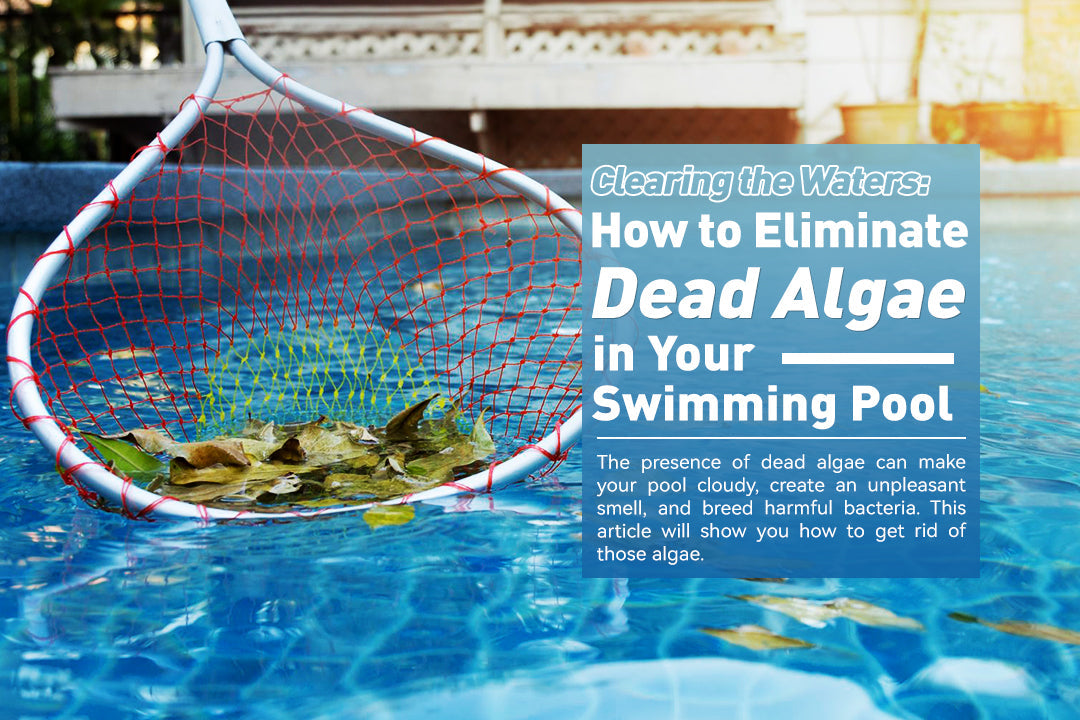Growing up, I was always envious of all my friends who had a swimming pool (or more accurately, my friend's parents swimming pool). Having a pool is such an asset to have in the summer months, especially if you live in a place where it gets super-hot. It wasn't until I became an adult where I learned just how much work a swimming pool really is.
While we all dream of a crystal-clear swimming pool, we don't realize that pools need constant maintenance. The presence of dead algae can turn your oasis into a murky mess and can also cause unpleasant odors and harbor harmful bacteria. If you need a few tips to taking care of your pool, or you are thinking about getting a pool, these steps will illustrate for you what it will take to get rid of that pesky algae.

- Assess and Test the Water
Before addressing the dead algae issue, it's essential to understand the current state of your pool water. Start by testing the chemical levels, including pH, chlorine, alkalinity, and sanitizer levels. This information will help you determine the appropriate treatment and ensure a balanced and healthy pool environment. Additionally, use a pool water testing kit to identify any imbalances that could contribute to the growth of algae.

- Remove Debris and Organic Matter
Clearing the pool of visible debris and organic matter is an essential first step in tackling dead algae. Skim the surface using a pool net to remove leaves, twigs, insects, and other floating debris. Use a pool vacuum to clean the bottom and sides, ensuring you reach every corner. This process will not only eliminate dead algae but also prevent further contamination and algal growth.

- Shock the Pool
Shocking the pool involves significantly increasing the chlorine levels to eliminate dead algae and other contaminants. Choose a pool shock product recommended by the manufacturer, following the instructions carefully. Typically, the process involves dissolving the shock treatment in a bucket of water before even distributing it throughout the pool. It's crucial to maintain appropriate safety precautions and allow the pool's filtration system to run continuously during this process.
- Brush and Scrub
To dislodge dead algae from the pool's surfaces, use a pool brush or scrubber to gently scrub the walls, steps, and floor. Pay extra attention to areas with visible algae growth. Brushing helps break down the dead algae and prevents it from settling and causing further issues. Be thorough and systematic to ensure complete coverage. After brushing, give the pool a few hours to allow the loosened algae to settle on the bottom.

- Vacuum and filter
Once the dead algae has settled at the bottom, use a pool vacuum to carefully remove it. Attach the vacuum head to the pole and manually guide it across the pool's surface, ensuring you cover every inch. Empty the vacuum bag frequently to avoid clogging and prolong its effectiveness. Additionally, clean or backwash the pool filter to remove any accumulated debris. A clean filter aids in efficient water circulation and helps prevent future algae growth.
- Maintain Proper Pool Care
Preventing the recurrence of dead algae involves ongoing maintenance. Regularly test and balance the chemical levels to keep the water balanced. Maintain appropriate sanitizer levels and ensure proper filtration and circulation. Skim the pool surface and clean debris promptly to prevent organic matter buildup. Regularly brush and vacuum the pool to discourage algae growth. Finally, maintain a consistent cleaning and maintenance routine, including checking equipment, to address any potential issues promptly.
Conclusion
By following these steps, you can effectively eliminate dead algae from your swimming pool, restoring its clarity and ensuring a safe and inviting swimming environment. Consistent maintenance, along with proper chemical balance and filtration, is key to preventing algae growth and preserving the beauty and hygiene of your pool throughout the summer season.



2 comments
Such a helpful guide for tackling dead algae in pools! Keeping the water clear can be a challenge, but these steps make it so much easier.
https://everlastpools.com.au
Taking care of a pool is a real pain in the ass, thanks for the advice!